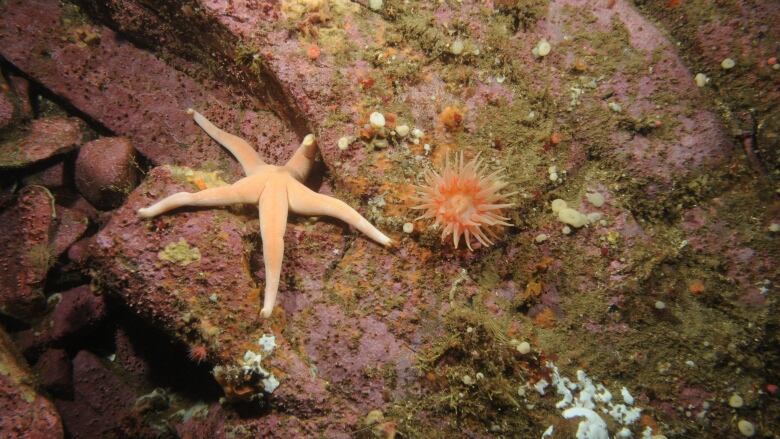St. Anns Bank will be largest marine-protected area off Nova Scotia
4,364-square kilometre area

Environmental groups are praising the federal government for planning to makeSt. Anns Bank, east of Scaterie Island, N.S., a marine protected area.
The government announced its proposed regulations Friday through its official newspaper, Canada Gazette.
Marine protection means the 4,364-square-kilometrearea wouldbe off-limits to oil and gas activities and bottom-trawling. Low-impact fishing would still be allowed in some areas.
"This is something that should be celebrated," said Susanna Fuller, senior marine coordinator at the Ecology Action Centre in Halifax.
"This is a hard thing to get to because it does involve fishermen and shipping and telecommunications and all kinds of users of the marine environment, as well as conservation groups."
First in a decade
Before the protection becomes official, it needs one final round of public consultation.
According to Nova Scotia's chapter of the Canadian Parks and Wilderness Society (CPAWS), St. Anns Bank will be the largest marine-protected area offthe province's coast and one of the first established in a decade. It also notes the marine-protected area would make "an important contribution" to Canada's target of protecting 10 per cent of its ocean by 2020.

'The right direction'
Chris Miller, the society's national conservation biologist, said in a news releasethere is still a long way to go to catch up.
"St. Anns Bank is an important site for conservation on its own, but it also moves Canada in the right direction toward achieving our national biodiversity conservation targets," Miller said in the release.
One of the reasons the area was chosenis because of its low fishing activity,so the economic impact will be minimal.
"From a protection perspective, it didn't face an incredible amount of opposition," Fuller said.
With files from Michael Gorman












_(720p).jpg)


 OFFICIAL HD MUSIC VIDEO.jpg)
.jpg)



























































































